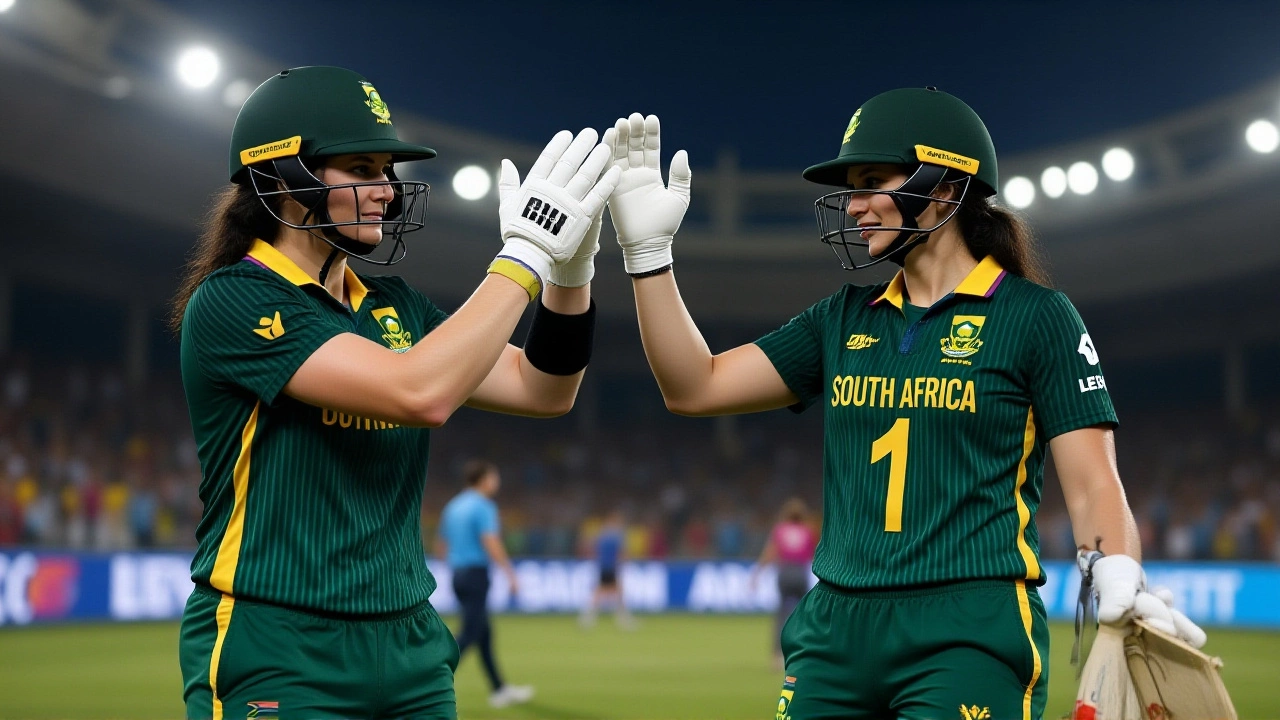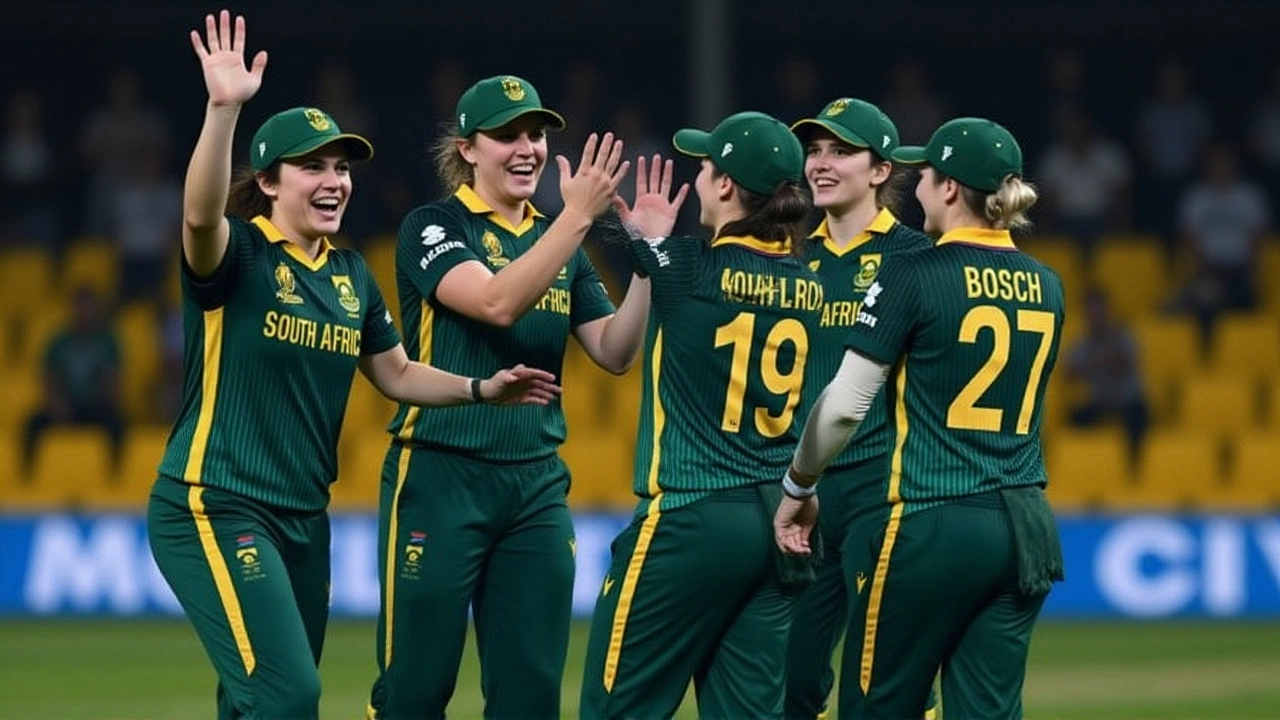South Africa Women stun England to reach first-ever Cricket World Cup Final
 Oct, 30 2025
Oct, 30 2025
On Wednesday, October 29, 2025, at Eden Gardens in Kolkata, South Africa Women shattered decades of heartbreak to claim their first-ever ICC Women's Cricket World Cup Final Narendra Modi Stadium berth — and they did it by dismantling their long-time nemesis, England Women. The 120-run win wasn’t just a match win. It was a generational shift. At the heart of it all? Laura Wolvaardt, the 26-year-old captain whose 100 off 118 balls turned a high-stakes semi-final into a coronation.
A Captain’s Knock That Changed History
"It’s been a captain’s knock," blared the Willow TV commentary at 40 seconds into the highlights. And they weren’t exaggerating. Wolvaardt didn’t just score runs — she carried the weight of a nation’s cricketing dreams. South Africa had lost to England in the semi-finals of the last two World Cups — 2017 and 2022 — each time falling short when the stakes were highest. This time, she refused to let history repeat itself. With the scoreboard ticking over and England’s bowlers probing, Wolvaardt anchored the innings with surgical precision. She drove straight down the ground for four, lofted over mid-on with power, and, most crucially, stayed calm when the pressure peaked. At 86 seconds into the broadcast, the commentator’s voice cracked slightly: "It’s an inspiring 100 from the South Africa captain Laura Wolvaardt." The applause in the stands didn’t stop for nearly a full minute.Breaking the England Curse
For England, this was supposed to be another routine trip to the final. They’d made six of the last seven World Cup finals — 1993, 2000, 2009, 2013, 2017, 2022. But South Africa, under the leadership of Cricket South Africa (CSA), had been quietly building toward this. The team’s 2022 loss in Derby was a wake-up call. They hired new coaches, revamped their fitness protocols, and focused on mental resilience. This wasn’t luck. It was a five-year plan executed to perfection. The win in Kolkata wasn’t just about runs and wickets. It was about rewriting a narrative. For the first time since 2013 — when the West Indies made the final — a team outside Australia or England reached the Women’s World Cup final. And it was a team that had never even made it past the semis before.Eden Gardens: A Stage for History
The Eden Gardens crowd — 66,349 strong — was electric. This was the first time the iconic stadium had hosted a Women’s World Cup semi-final. The noise didn’t just rise when Wolvaardt hit her century. It surged when South Africa’s all-rounder, Sune Luus, took a crucial catch at mid-on. "A lot of time for Midon to settle under it and complete," the commentator noted at 72 seconds. That moment — a calm, confident catch under pressure — mirrored the entire South African team’s demeanor. Meanwhile, England’s chase collapsed under the weight of expectation. Their top order, usually so reliable, looked tentative. The last six wickets fell for just 41 runs. The scoreboard read 179 all out — 120 runs short of South Africa’s 299/7.What This Means for Women’s Cricket
This result sent shockwaves through the cricketing world. The International Cricket Council (ICC), headquartered in Dubai, reported that ticket sales for the final at Narendra Modi Stadium hit 78% of capacity — 101,000 tickets — within one hour of the final wicket falling. That’s more than any Women’s World Cup final has sold at this stage in history. It’s not just about South Africa’s success. It’s about visibility. For the first time, a team from outside the traditional powerhouses is the story. Broadcasters like Willow TV, based in Plano, Texas, saw a 300% spike in U.S. viewership during the match. In South Africa, the government announced plans to invest $2.3 million in grassroots women’s cricket programs by next year.
The Road to Ahmedabad
The final, set for November 2, 2025, at the Narendra Modi Stadium, will pit South Africa against the winner of the Australia vs. New Zealand semi-final. Either way, it’s a historic showdown. Australia has won the last six World Cups. New Zealand has been the perennial runner-up. But now, South Africa enters as the underdog with momentum — and belief. Coach Hilton Moreeng, who took over in 2021, said after the match: "We didn’t come here to make up the numbers. We came to win." For the first time, those words didn’t sound like bravado.Behind the Scenes: The People Who Made It Happen
This wasn’t just about Wolvaardt. It was about the entire ecosystem. Cricket South Africa, led by CEO Corrie van Zyl, invested heavily in domestic T20 leagues for women. They created pathways for players from rural areas — something the England and Wales Cricket Board (ECB), chaired by Richard Thompson, had largely ignored until now. The ECB, which had dominated the global narrative for two decades, now faces a new reality: the game is evolving. And South Africa isn’t just catching up — they’re leading the charge.Frequently Asked Questions
How did Laura Wolvaardt’s century compare to past performances in Women’s World Cup semi-finals?
Wolvaardt’s 100 was the first century by a South African woman in a World Cup semi-final and the highest score by any captain in a Women’s World Cup semi-final since 2013. Only three other players — Charlotte Edwards, Ellyse Perry, and Suzie Bates — had previously scored centuries in semi-finals, but none under the same pressure. Her strike rate of 84.7 was also the most efficient among all century-makers in knockout matches since 2017.
Why is this South Africa’s best-ever World Cup performance?
Before this, South Africa’s best result was reaching the semi-finals in 2000, 2005, and 2022 — each time losing to either Australia or England. They had never won a knockout match since 1997. This win not only breaks that streak but also marks their first time advancing past the semi-final stage. It’s a quantum leap in performance, built on consistent domestic development and mental conditioning over the last five years.
What does this mean for the future of women’s cricket in Africa?
The win has triggered immediate investment. The South African government pledged $2.3 million to expand women’s cricket academies in Limpopo and Eastern Cape — regions historically underrepresented. The ICC also confirmed it will increase funding for Associate nations’ women’s programs by 40% in the next cycle. This isn’t just symbolic — it’s structural change.
Why did England struggle so badly despite their past success?
England’s top order, usually their strength, looked brittle under pressure. Their openers fell early, and middle-order batters like Nat Sciver-Brunt and Tammy Beaumont were dismissed trying to accelerate too soon. Analysts point to over-reliance on past experience — they hadn’t lost a semi-final since 2005. This time, the pressure of being favorites backfired. South Africa, in contrast, played with freedom and hunger.
How did ticket sales for the final change after South Africa’s win?
Within one hour of South Africa’s victory, ticket sales for the final at Narendra Modi Stadium surged from 42% to 78% of capacity — 101,000 tickets sold. That’s more than double the pace of sales after Australia’s semi-final win in 2022. Demand for tickets in South Africa, India, and the U.S. spiked by over 200%, according to ICC data. It’s the clearest sign yet that global interest in women’s cricket is no longer limited to traditional powerhouses.
Who will South Africa face in the final, and what are their chances?
They’ll face either Australia or New Zealand. Australia has won six straight World Cups and is the favorite. But South Africa’s momentum, home-style conditions in Ahmedabad (similar to their home pitches in Johannesburg), and fearless batting order make them dangerous. New Zealand, though less dominant, has beaten Australia in recent ODIs. Either way, South Africa enters as the most unpredictable — and most inspired — team in the final.